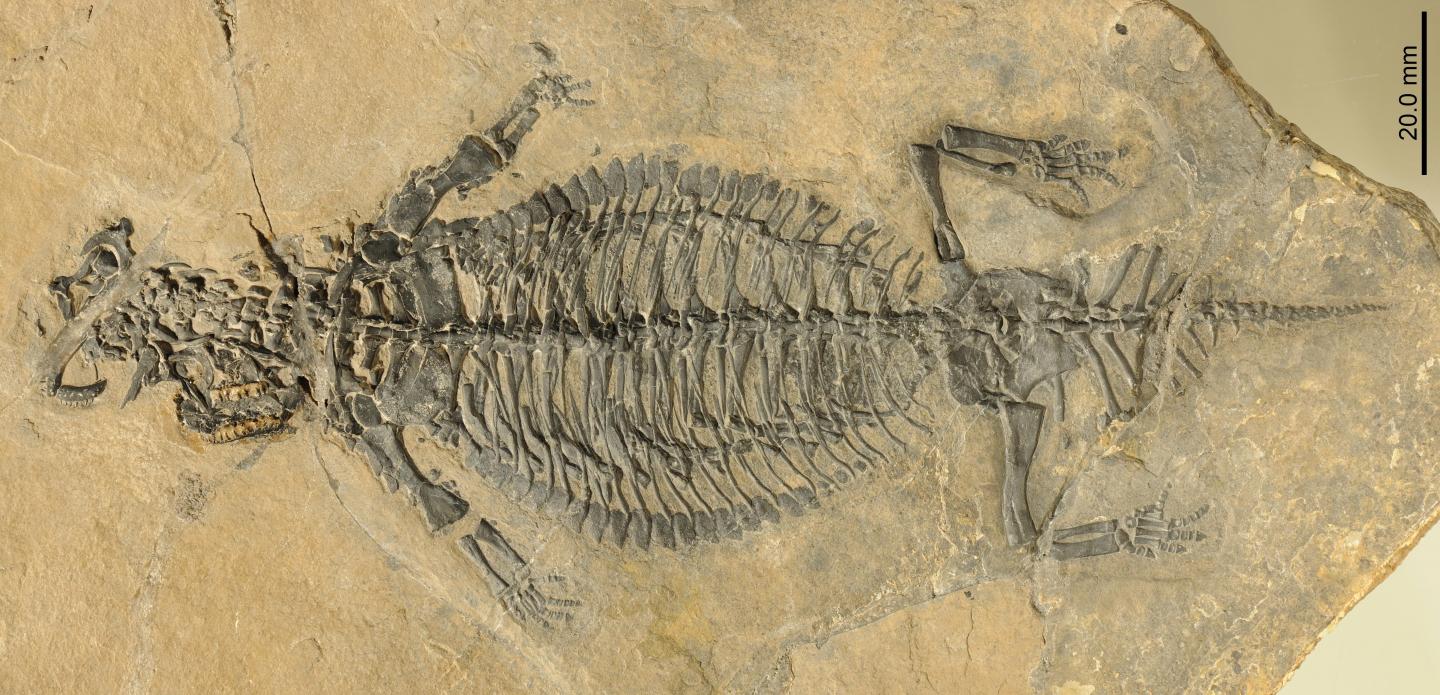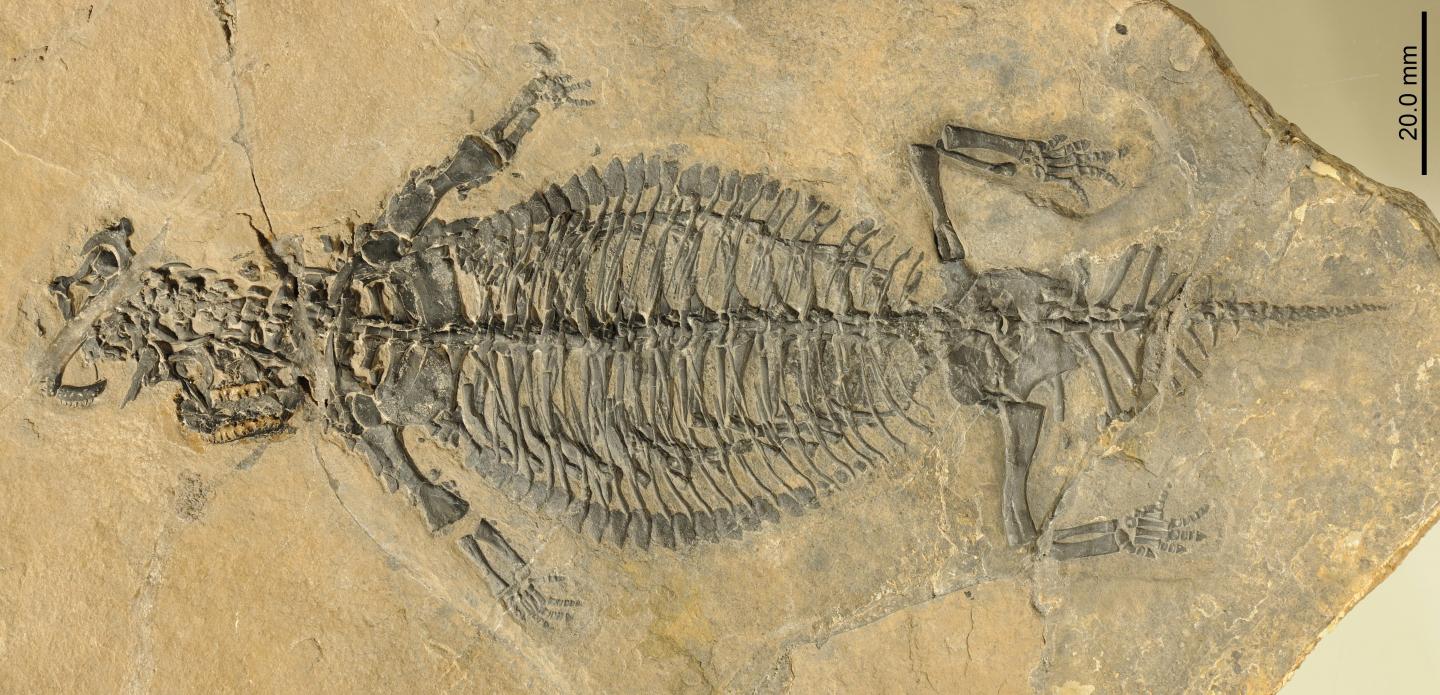
Credit: (Credits: Beat Scheffold; Palaeontological Institute and Museum, University of Zurich, Switzerland).
An exceptionally-preserved fossil from the Alps in eastern Switzerland has revealed the best look so far at an armoured reptile from the Middle Triassic named Eusaurosphargis dalsassoi. The fossil is extremely rare in that it contains the animal's complete skeleton, giving an Anglo-Swiss research team a very clear idea of its detailed anatomy and probable lifestyle for the first time, according to a paper published in Scientific Reports today.
At just 20 cm long, the specimen represents the remains of a juvenile. Yet large portions of its body were covered in armour plates, with a distinctively spiky row around each flank, protecting the animal from predators. Today's girdled lizards, found in Africa, have independently evolved a very similar appearance even though they are not closely related to Eusaurosphargis.
The new fossil, found in the Prosanto Formation at Ducanfurgga, south of Davos in Switzerland, is not the first material of Eusaurosphargis to be discovered. The species was originally described in 2003 based on a partially complete and totally disarticulated specimen from Italy. This was found alongside fossils of fishes and marine reptiles, leading scientists to believe that Eusaurosphargis was an aquatic animal.
However, the detail preserved in the new specimen shows a skeleton without a streamlined body outline and no modification of the arms, legs or tail for swimming. This suggests that the reptile was in fact most probably adapted to live, at least mostly, on land, even though all of its closest evolutionary relatives lived in the water.
"Until this new discovery we thought that Eusaurosphargis was aquatic, so we were astonished to discover that the skeleton actually shows adaptations to life on the land," says Dr James Neenan, research fellow at Oxford University Museum of Natural History and co-author of the new paper about Eusaurosphargis dalsassoi. "We think this particular animal must have washed into the sea from somewhere like a beach, where it sank to the sea floor, was buried and finally fossilised."
###
The findings from the research team are published in Scientific Reports as 'A new, exceptionally preserved juvenile specimen of Eusaurosphargis dalsassoi (Diapsida) and implications for Mesozoic marine diapsid phylogeny'.
For further information:
Dr James Neenan
Research fellow
Oxford University Museum of Natural History
[email protected]
01865 272 995
Notes to editors
About the Museum of Natural History
Founded in 1860 as the centre for scientific study at the University of Oxford, the Museum of Natural History now holds the University's internationally significant collections of entomological, geological and zoological specimens. Housed in a stunning Pre-Raphaelite-inspired example of neo-Gothic architecture, the Museum's growing collections underpin a broad programme of natural environment research, teaching and public engagement.
In 2015, the Museum was a Finalist in the Art Fund Prize for Museum of the Year. In 2016, it won the top accolade, Best of the Best, in the Museums + Heritage Awards.
http://www.oum.ox.ac.uk
http://www.morethanadodo.com
Media Contact
Lanisha Butterfield
[email protected]
01-865-280-531
@UniofOxford
http://www.ox.ac.uk/
############
Story Source: Materials provided by Scienmag





